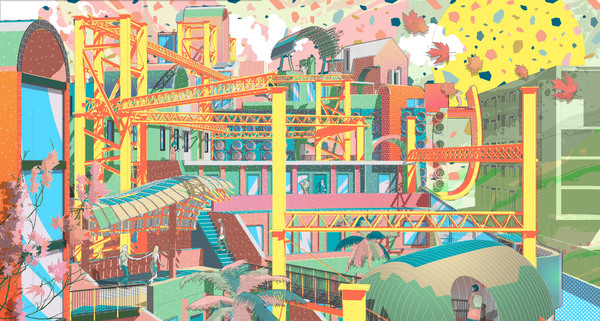Can architects create real social change without addressing their own position within society? This is the issue I sought to explore though my research. My thesis project explored the issue of intergenerational inequality between the millennial generation and its predecessors. As a millennial myself, it gave me the opportunity to understand my own cultural identity and my position within the industry.
Exemplified in the UK housing market, millennials face a growing unease between desired and imposed realities, a term I've coined 'millennial dread'. Under Gramsci's theory of hegemony, capitalist structures act to maintain existing balances of power and suppress alternatives, forcing disparity between the dominant and marginalised groups. Ultimately this manifests within the spaces we occupy and the practices we deploy as architects.
Hype Architecture is an architectural persona developed, through a series of artist studies, to respond to this issue. It embraces the alternative and takes an aggressive stance towards hegemonic constructs within architecture. Taking the two tools of agency architects have at their disposal, critique and praxis, Hype Architecture developed a design process that would both promote alternative design practices and maintained an explicit critical element within this design. This design process was then applied to a millennial specific housing development located in Ancoats, Manchester.
This development is a manifesto project for Hype Architecture. Its intention is to generate a wide reaching response in millennials and the general public. It features a range of alternative living arrangements and economies. Key to the design is the elevation of critique, achieved through a combination of deconstruction, narrative and collage to bring to light the shortfalls in each typology. This alone is not enough and my research also speculates on the changes to the role of an architect and the industry at whole to bring about effective social change.


